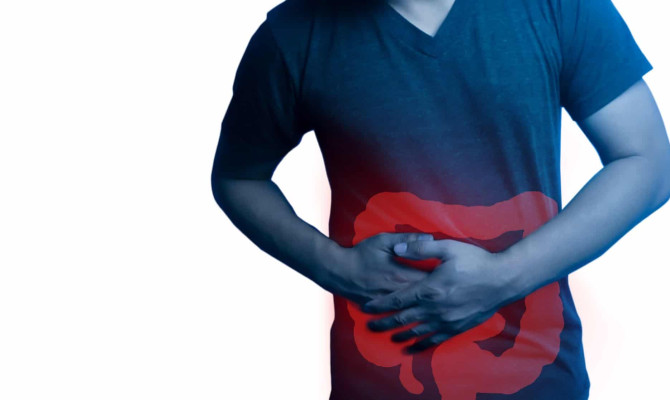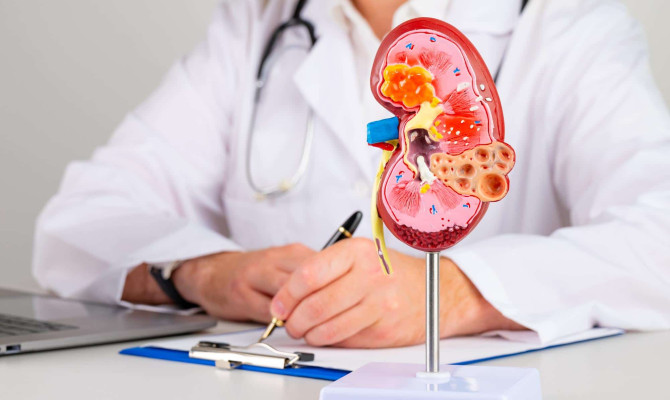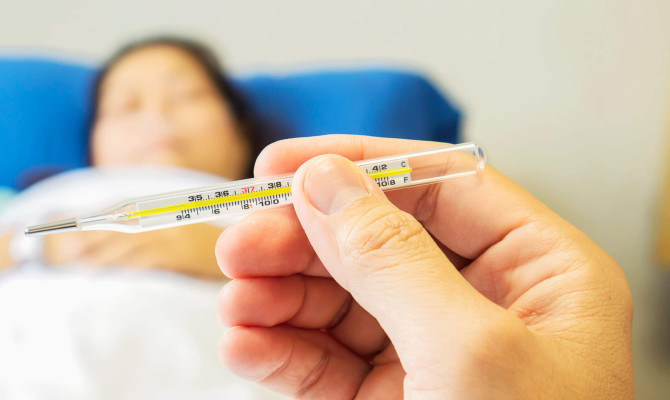Understanding Lymph Nodes In The Jawline : Anatomy, Function & Health

- Lymph Nodes
- 20 Sep 2023
Introduction
Lymphatic System
The lymphatic system is a crucial component of our body’s defense mechanism, running parallel to the circulatory system. Within this intricate network, lymph nodes are vital players. In this comprehensive article, we delve deep into the lymph nodes residing in the jawline, which serve as guardians due to their strategic location near critical structures such as the oral cavity, head, and neck. Our goal is to offer a thorough understanding of these jawline lymph nodes, covering their anatomy, functions, common health concerns, diagnostic procedures, treatment options, and preventive measures.

Anatomy
Anatomy of Lymph Nodes 1 Anatomy of lymph nodes | Researched based study from National Institutes of Health
Lymph nodes are intricate, bean-shaped structures, serving as essential hubs within the lymphatic system. The lymphatic system is a vast network of lymphatic vessels, nodes, and organs that work synergistically with the circulatory system to maintain fluid balance and protect against infections. The jawline lymph nodes, situated beneath the skin and alongside blood vessels, are a subset of cervical lymph nodes, which include nodes in the neck and throat regions.
These lymph nodes have a unique anatomical structure. They comprise a fibrous capsule that houses a mesh-like network of reticular fibers. The lymphatic tissue within contains various types of immune cells, primarily lymphocytes and macrophages. The jawline lymph nodes typically measure between 1 to 2 centimeters in diameter. Their size, shape, and distribution are tailored to their role in monitoring lymphatic fluid from the face, oral cavity, and surrounding areas.
Function
Function of Lymph Nodes
Lymph nodes are the unsung heroes of the immune system, performing the pivotal role of filtering and monitoring lymphatic fluid. Lymphatic fluid, a colorless, watery fluid containing white blood cells, cellular debris, and potential pathogens, continuously circulates through the lymphatic vessels. When this fluid reaches the jawline lymph nodes, it undergoes a meticulous inspection.
Immune cells residing within the lymph nodes, predominantly lymphocytes and macrophages, are on high alert. Their duty is to scrutinize the contents of the lymphatic fluid for any signs of trouble. If they detect foreign invaders, be it bacteria, viruses, or cancer cells, they initiate a swift and coordinated immune response. This response involves the activation of immune defenses to neutralize the threat.
In the context of the jawline, these lymph nodes play a crucial role in safeguarding the oral and facial regions. They act as sentinels, meticulously patrolling for potential infections and threats arising from the mouth, nose, and throat. This surveillance is a vital part of our body’s defense mechanism, preventing the spread of infections to deeper tissues and organs.
Lymph Nodes & Health
Jawline Lymph Nodes & Health 2 Lymph Node Infections | Researched based study from National Institutes of Health
Understanding the health of jawline lymph nodes is pivotal, as changes in their status can be indicative of various medical conditions. In particular, these lymph nodes are susceptible to:
Infections: Jawline lymph nodes are quick to respond when infections occur in the facial or oral regions. Dental infections, such as abscesses, gum infections, or cavities, often trigger localized inflammation and enlargement of these nodes. Similarly, conditions like tonsillitis and upper respiratory tract infections can lead to swollen lymph nodes in the jawline as they filter lymphatic fluid for signs of infection.
Inflammation: Beyond infections, non-infectious causes of inflammation can also affect jawline lymph nodes. Autoimmune disorders, such as rheumatoid arthritis or lupus, may incite a heightened immune response, causing these nodes to swell. Additionally, allergic reactions, triggered by allergens from food, medications, or environmental factors, can lead to lymph node enlargement in response to the perceived threat.
Tumors: In certain instances, lymph nodes in the jawline may enlarge due to the infiltration of cancer cells. These nodes can act as a critical barrier to the spread of cancer, capturing and containing malignant cells. However, the enlargement of jawline lymph nodes can also be a red flag, indicating the presence of cancer. This warrants prompt medical attention and further investigation to determine the underlying cause and extent of the condition.
Symptoms
Signs & Symptoms of Lymph Node Issues in the Jawline
Signs and symptoms of lymph node issues in the jawline encompass
- Pain
- Tenderness
- Swelling &
- Difficulties with swallowing or speaking.
These symptoms often prompt individuals to seek medical evaluation, particularly when they persist or worsen. Proper diagnosis and timely intervention are vital for managing these conditions effectively.
Diagnosis
Diagnosing Jawline Lymph Node Conditions 3Diagnosis of Neck Swellings | Researched based study from American Academy of Family Physicians
Diagnosing conditions related to jawline lymph nodes is a meticulous process, drawing upon various medical examinations and tests:
Physical Examination: Healthcare providers employ a hands-on approach to conduct a thorough physical examination. This involves palpating the jawline area gently, assessing the size, tenderness, and texture of the lymph nodes. An experienced healthcare practitioner can often glean initial insights from this physical assessment.
Blood Tests: Blood tests are invaluable tools for investigating lymph node conditions. They can reveal critical information about infection markers, inflammation levels, and the body’s immune response. Elevated white blood cell counts, for instance, may suggest an ongoing infection or inflammatory process.
Imaging Techniques: When further insights are required, advanced imaging techniques come into play. Procedures such as ultrasound, computed tomography (CT) scans, or magnetic resonance imaging (MRI) scans provide detailed visualizations of the lymph nodes and the surrounding tissues. These images assist healthcare providers in assessing the lymph nodes’ size, shape, and potential abnormalities.
Biopsy Procedures: In cases where a definitive diagnosis is elusive, or when malignancy is suspected, biopsy procedures become necessary. Fine-needle aspiration (FNA) or surgical biopsies are techniques used to extract a small sample of lymph node tissue for laboratory analysis. The collected tissue undergoes rigorous examination, including histopathological evaluation, to identify specific issues or underlying causes.
The choice of diagnostic method often hinges on the patient’s symptoms, medical history, and the healthcare provider’s clinical judgment. These comprehensive assessments and diagnostic tools enable healthcare professionals to pinpoint the cause of lymph node issues accurately.
Causes
Causes of Jawline Lymph Node Enlargement 4Causes of Lymph Node Swellings | Researched based study from Medline Plus
Understanding the diverse array of factors that can lead to jawline lymph node enlargement is instrumental in guiding both diagnosis and treatment:
Dental Infections: Dental infections, such as dental abscesses or periapical infections, frequently instigate localized inflammation and the enlargement of nearby jawline lymph nodes. These nodes react to the infection by increasing in size and becoming tender. Proper dental care and hygiene are essential for preventing these issues.
Respiratory Infections: Upper respiratory infections, which encompass illnesses like the common cold, strep throat, or sinus infections, can trigger the lymph nodes in the jawline to swell. As part of their immune surveillance, these nodes respond to the presence of pathogens in the lymphatic fluid, leading to enlargement.
Skin Conditions: Inflammatory skin conditions, particularly those affecting the face, can incite an immune response in nearby lymph nodes. Conditions like cellulitis, which is characterized by skin inflammation and infection, can lead to lymph node enlargement as the immune system combats the inflammation. Skin care and hygiene are critical for preventing such occurrences.
Malignant Conditions: In more concerning scenarios, lymph nodes in the jawline may enlarge due to the infiltration of cancer cells. This enlargement can serve as a defensive response to contain the spread of cancer. However, it can also signify the presence of a malignancy, warranting immediate medical attention. Lymph nodes often act as a crucial defense against cancer spread, and their enlargement can be an early warning sign.
Understanding the potential causes of jawline lymph node enlargement aids healthcare providers in narrowing down the diagnostic possibilities and developing targeted treatment strategies. In many cases, prompt intervention can prevent complications and facilitate a faster recovery.
Treatment
Treatment & Management for Jawline Lymph Node Conditions 5 Treatment of Swollen Nodes| Researched based study from Health Direct
Treatment and management strategies for jawline lymph node conditions are intricately tailored to the underlying cause:
Infections: When infections are at the root of lymph node issues, healthcare providers typically prescribe antibiotics or antiviral medications. These medications are selected based on the specific pathogen causing the infection. Timely treatment not only alleviates symptoms but also prevents the infection from spreading to deeper tissues.
Inflammation: Non-infectious causes of lymph node enlargement often require a multifaceted approach. Healthcare providers may prescribe anti-inflammatory medications to manage swelling and discomfort. In cases linked to autoimmune disorders, addressing the underlying autoimmune condition with disease-modifying drugs or immunosuppressive therapy may be necessary.
Tumors: Lymph nodes affected by tumors necessitate a comprehensive approach. The treatment plan largely depends on the type of cancer, its stage, and the extent of lymph node involvement. Options may encompass surgical removal of the affected lymph nodes, radiation therapy, chemotherapy, targeted therapy, or immunotherapy. These treatments aim to eliminate or control the cancer while preserving overall health.
Engaging in open and informed discussions with healthcare providers is crucial for developing a tailored treatment plan. The choice of treatment depends on factors such as the underlying condition, the patient’s overall health, and individual preferences.
Prevention
Prevention & Maintenance of Jawline Lymph Node Issues
Proactive measures can be taken to reduce the risk of jawline lymph node issues and maintain optimal lymphatic system health:
Maintaining Good Oral Hygiene: Consistent and thorough oral hygiene practices are the foundation of preventing dental infections that may lead to lymph node problems. This includes regular brushing, flossing, and dental check-ups. Dental care is especially critical for those with a history of dental issues.
Reducing the Risk of Infections: Beyond dental hygiene, general hygiene practices are essential. Frequent handwashing, particularly before eating or touching the face, helps reduce the risk of infections. Avoiding close contact with individuals who have contagious illnesses is also a preventive measure.
Lifestyle Tips for a Healthy Lymphatic System: Maintaining overall health and wellness positively impacts the lymphatic system, including the jawline lymph nodes. Staying adequately hydrated supports lymphatic fluid circulation. Consuming a balanced diet rich in essential nutrients provides the body with the tools it needs to maintain a robust immune system. Engaging in regular physical activity helps promote healthy lymphatic flow.
These preventive measures are within everyone’s reach and contribute significantly to reducing the risk of lymph node issues in the jawline and supporting overall health.
FAQs
Frequently Asked Questions on Jawline Lymph Nodes
Q1: Can jawline lymph nodes become cancerous?
A1: Yes, jawline lymph nodes can be affected by cancer. They can either be a site where cancer originates (primary lymphoma) or a location where cancer spreads (metastasis). Enlarged lymph nodes in the jawline may warrant further evaluation to determine the underlying cause, which can include cancer.
Q2: Are swollen jawline lymph nodes always a sign of a serious medical condition?
A2: Swollen jawline lymph nodes can result from a range of factors, not all of which are serious. While infections and inflammation are common causes, persistent or unexplained swelling should prompt consultation with a healthcare professional to rule out more concerning conditions.
Q3: How can I maintain the health of my jawline lymph nodes?
A3: You can support the health of your jawline lymph nodes by practicing good oral hygiene, maintaining proper hand hygiene, and adopting a healthy lifestyle that includes a balanced diet and regular exercise. These habits contribute to the overall well-being of your lymphatic system.
Q4: What is lymphatic drainage massage, and can it help with jawline lymph node issues?
A4: Lymphatic drainage massage is a gentle technique designed to promote the circulation of lymphatic fluid. While it can be beneficial for certain lymphatic-related conditions, such as lymphedema, it’s essential to consult a healthcare professional before pursuing this therapy for jawline lymph node issues to ensure it’s suitable for your specific situation.
Q5: Can jawline lymph node issues be prevented?
A5: While it’s not always possible to prevent lymph node issues entirely, you can take proactive steps to reduce your risk. Practicing good hygiene, maintaining dental health, and seeking prompt medical attention for infections or persistent symptoms are essential measures to help lower the likelihood of jawline lymph node issues.
Conclusion
Jawline Lymph Nodes – Conclusion
In conclusion, lymph nodes in the jawline are essential components of the immune system, helping to defend against infections and monitor the health of the face and oral cavity. Understanding their anatomy, function, and potential health concerns is crucial for maintaining overall well-being. Regular check-ups with healthcare professionals, especially for persistent or concerning symptoms, can ensure timely diagnosis and appropriate management of jawline lymph node conditions.
Any feedback on this article?
 This Articles content was accurate
This Articles content was accurate Very Informative Article
Very Informative Article I have a question or a comment
I have a question or a comment
 This article contains inaccurate content
This article contains inaccurate content This article was not helpful
This article was not helpful I have a question or a comment
I have a question or a comment
We appreciate your helpful feedback!
Checkout our social pages
References
-
National Institutes of Health
Anatomy of lymph nodes
-
National Institutes of Health
Lymph node infections
-
American Academy of Family Physicians
Diagnosis of neck swellings
-
Medline Plus
Causes of lymph node swellings
-
Health Direct
Treatment of swollen nodes





































